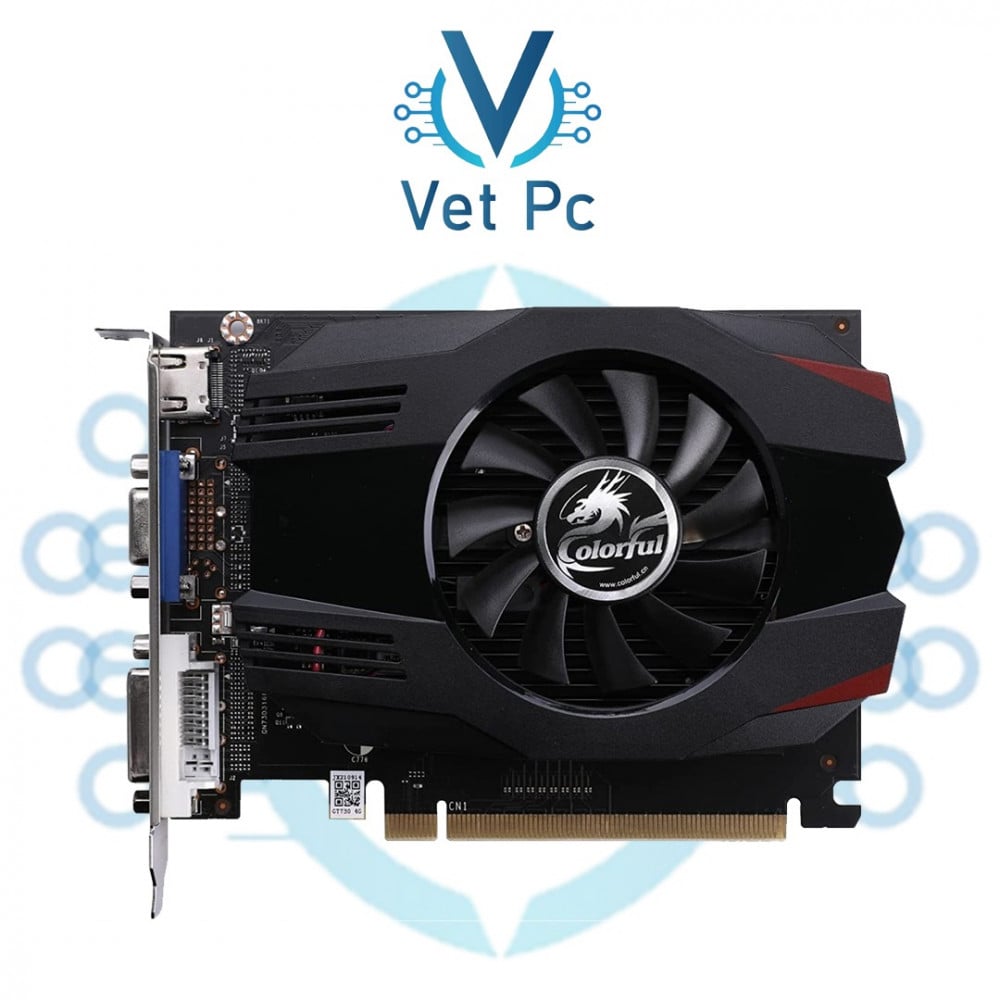Graphics card
- The graphics card is a very important part of any computer, as it controls the display of the image on the screen.
- The graphics card processes graphic data and converts it into signals that the monitor can understand and display. Since many computer applications require high-resolution graphics and speed, the graphics card plays an important role in achieving this performance.
There are many types of graphics cards available on the market, and they vary in performance and features. These types include:
- Integrated graphics cards: These are types of graphics cards that come built into your computer. They typically have lower performance and lower graphics rendering capabilities.
- Discrete graphics cards: These are types of graphics cards that are installed separately from the computer and are characterized by high performance and the ability to display high-quality graphics and speed.
- Professional graphics cards: These are types of graphics cards used in professional fields such as graphic design, video games, and movies. They are characterized by high performance and the ability to display high-quality, high-resolution graphics.
- Virtual graphics cards: These are types of graphics cards that come integrated with a server computer and are used to run graphics computing in the cloud.
Graphics cards are manufactured by several companies specializing in this field, such as NVIDIA and AMD, and these companies offer a variety of options to meet the needs of different users.
You should determine your performance requirements and budget when choosing a graphics card, as the choice may be related to performance, price, or other factors such as your uses, and it should be chosen in line with the rest of your build components .
What factors should you consider when choosing a graphics card?
When choosing a graphics card , there are several factors that affect performance and quality, including:
- Performance: You should choose a graphics card that meets your performance requirements, as performance affects the ability to display graphics quickly and at high resolution.
- Memory: Memory is a crucial factor in determining graphics card performance, as it can affect graphics rendering speed and quality.
- Temperature: The graphics card's ability to withstand and operate for extended periods of time in high temperatures must be considered. Temperature can affect the performance and lifespan of the graphics card.
- Connectivity: Make sure your graphics card is compatible with your computer's available inputs, such as PCI Express, HDMI, and DisplayPort.
- Brand: Different brands offer a variety of graphics card options, and you should look for brands that are reliable and provide the necessary technical support.
- Price: You should consider your budget when choosing a graphics card, as there are multiple options with varying costs. You should look for the graphics card that provides the desired performance at the best possible value.
- Usage: You should consider the nature of your computer usage and your performance requirements, as graphics card requirements vary between video games, graphic design, and scientific computing.
- Technical Support: Look for brands that offer good technical support and a warranty. You may encounter technical or performance issues with your graphics card, and technical support should be available to help you resolve the issue.
- Power consumption: The power consumption of your graphics card should be taken into account, as high power consumption can contribute to an increase in your electricity bill. Look for graphics cards that offer the best performance while using less power.
- Size and design: The size and design of the graphics card should be taken into consideration, as the size can affect the computer's ability to cool the graphics card. Some people may need smaller graphics cards for use in laptops or small computers.
- Operating system compatibility: Ensure that the graphics card is compatible with the operating system your computer is running, as there may be compatibility issues with some operating systems.
- Lighting and Decoration: Some companies offer lighting and decoration for graphics cards, and these options can be important for people who want to change the look of their computer.
- Research and compare: You should thoroughly research and compare the different graphics cards available on the market. You can use websites that evaluate and compare graphics cards to obtain accurate and detailed information.
- Application-specific requirements: The specific requirements of the application for which the graphics card will be used must be considered. The requirements for video games differ from those for graphic design and scientific computing, so you must look for a graphics card that best meets the requirements of the application.
- Recommendations and opinions: Expert recommendations and previous user opinions can be helpful when choosing a graphics card, and reviews can be found on user websites.
- Frequency and memory speed: Look for a graphics card that offers a high frequency and memory speed, as these factors can affect the speed and quality of graphics display.
- Software download time: Look for a graphics card that includes easy-to-use drivers that download quickly and easily.
- Size and number of fans: You should look for a graphics card that includes one or two fans for cooling, and you should also consider the size of the graphics card and its input and output ports.
In general, you should research and verify the graphics card specifications and compare them with your personal needs and budget. You can consult experts or review websites that evaluate and compare graphics cards to make the best choice for a graphics card that meets your needs and provides high performance and quality.
These are some of the factors to consider when choosing a graphics card , and you should research and check the graphics card specifications and compare them with your personal needs to get the graphics card that meets your needs and provides high performance and quality.

